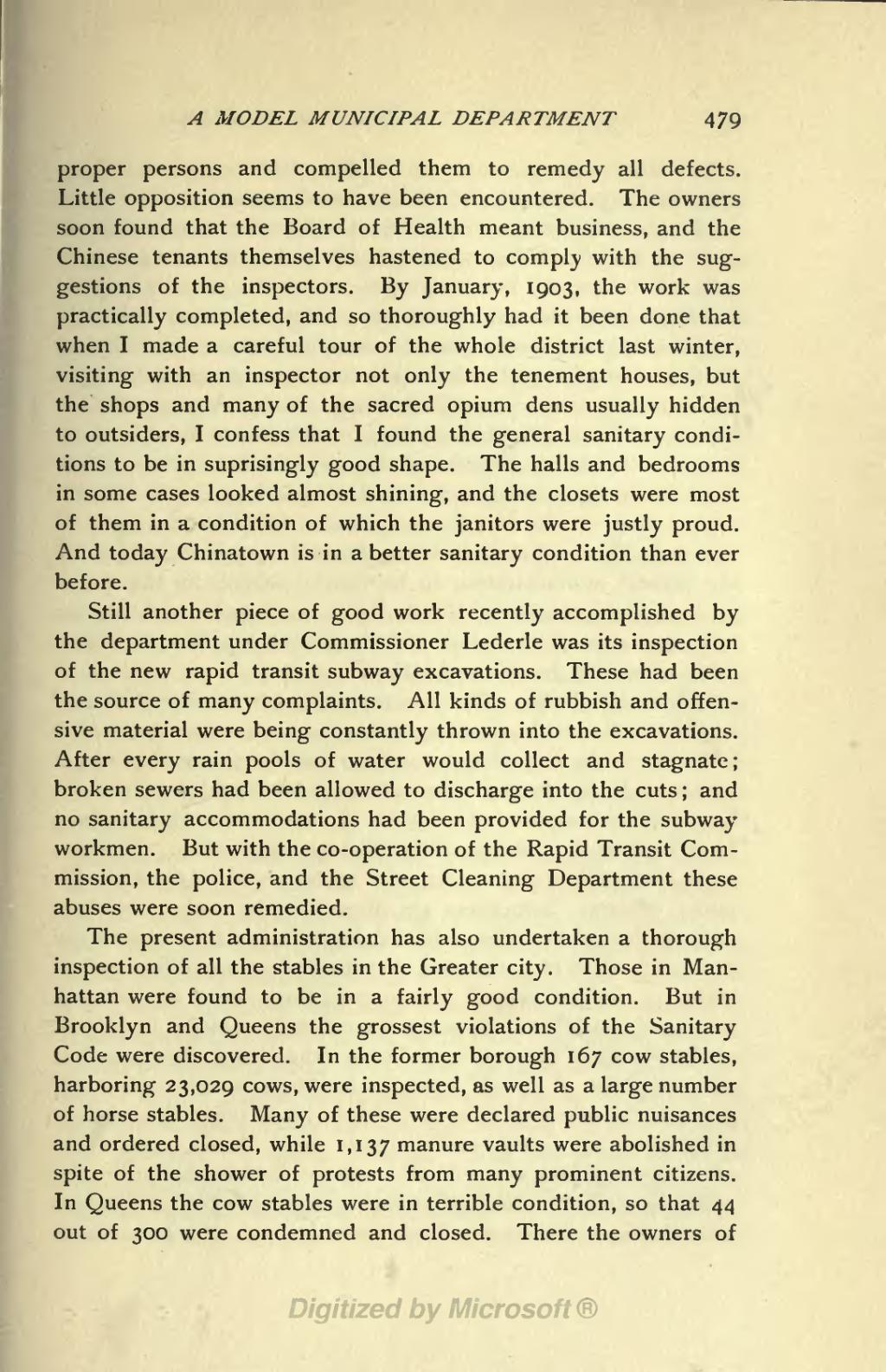A MODEL MUNICIPAL DEPARTMENT 479
proper persons and compelled them to remedy all defects. Little opposition seems to have been encountered. The owners soon found that the Board of Health meant business, and the Chinese tenants themselves hastened to comply with the sug- gestions of the inspectors. By January, 1903, the work was practically completed, and so thoroughly had it been done that when I made a careful tour of the whole district last winter, visiting with an inspector not only the tenement houses, but the shops and many of the sacred opium dens usually hidden to outsiders, I confess that I found the general sanitary condi- tions to be in suprisingly good shape. The halls and bedrooms in some cases looked almost shining, and the closets were most of them in a condition of which the janitors were justly proud. And today Chinatown is in a better sanitary condition than ever before.
Still another piece of good work recently accomplished by the department under Commissioner Lederle was its inspection of the new rapid transit subway excavations. These had been the source of many complaints. All kinds of rubbish and offen- sive material were being constantly thrown into the excavations. After every rain pools of water would collect and stagnate ; broken sewers had been allowed to discharge into the cuts ; and no sanitary accommodations had been provided for the subway workmen. But with the co-operation of the Rapid Transit Com- mission, the police, and the Street Cleaning Department these abuses were soon remedied.
The present administration has also undertaken a thorough inspection of all the stables in the Greater city. Those in Man- hattan were found to be in a fairly good condition. But in Brooklyn and Queens the grossest violations of the Sanitary Code were discovered. In the former borough 167 cow stables, harboring 23,029 cows, were inspected, as well as a large number of horse stables. Many of these were declared public nuisances and ordered closed, while 1,137 manure vaults were abolished in spite of the shower of protests from many prominent citizens. In Queens the cow stables were in terrible condition, so that 44 out of 300 were condemned and closed. There the owners of
